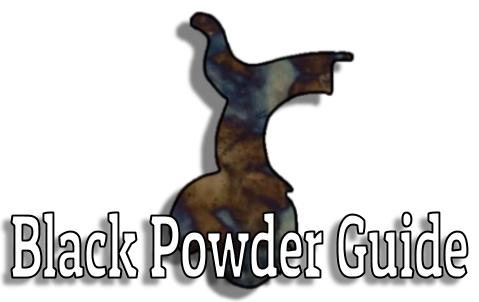Moisture is a definite way to cause your black powder revolver to go “click” instead of “bang” when you pull the trigger.
When I first got into the sport, I wanted to find out what methods work and what ones are absolute failures.
I subjected many methods to a 15-minute water submersion and was actually very surprised by the results.
If you’re just looking for a quick and easy answer on how to “waterproof” your black powder revolver, I’ve got you covered.
The most practical way to waterproof a cap and ball revolver is to rub a stick of bees wax liberally on the walls of the nipple prior to capping it. The cap must be perfectly fitted to the nipple for success. SliXshot brand nipples paired with Remington #10 caps work excellent.
That being said, I think it’s critical to state upfront that there is no “waterproofing” a black powder revolver for functional use — there is only making it “water resistant”.
There are simply too many variables in the process of loading, “waterproofing”, carrying, and of the storage of the raw materials used in order to guarantee a shot everytime. You might actually successfully waterproof the cylinder, but the cap was a dud, or the lubricated wad leeched into your powder.
In this article I’ll guide you through my findings, what methods were used, and how I tested them.
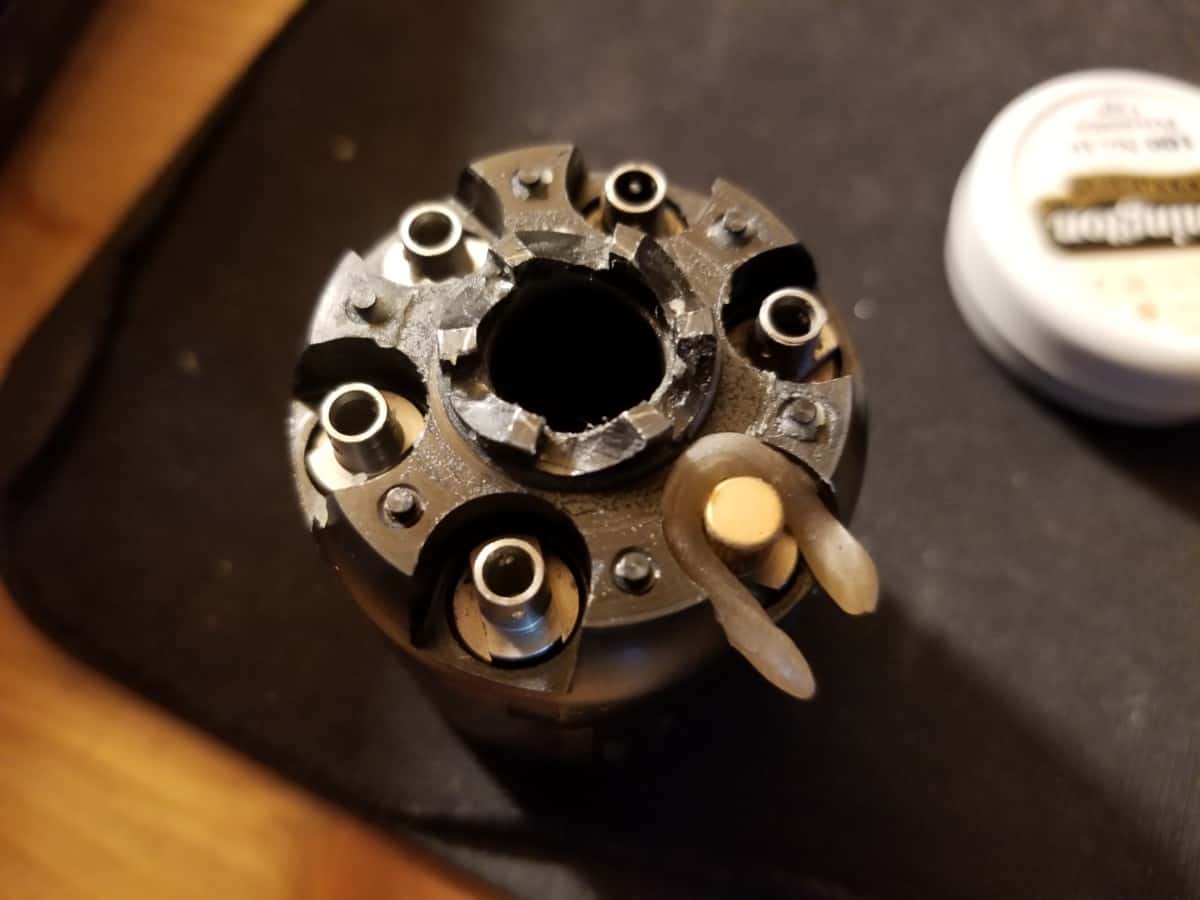
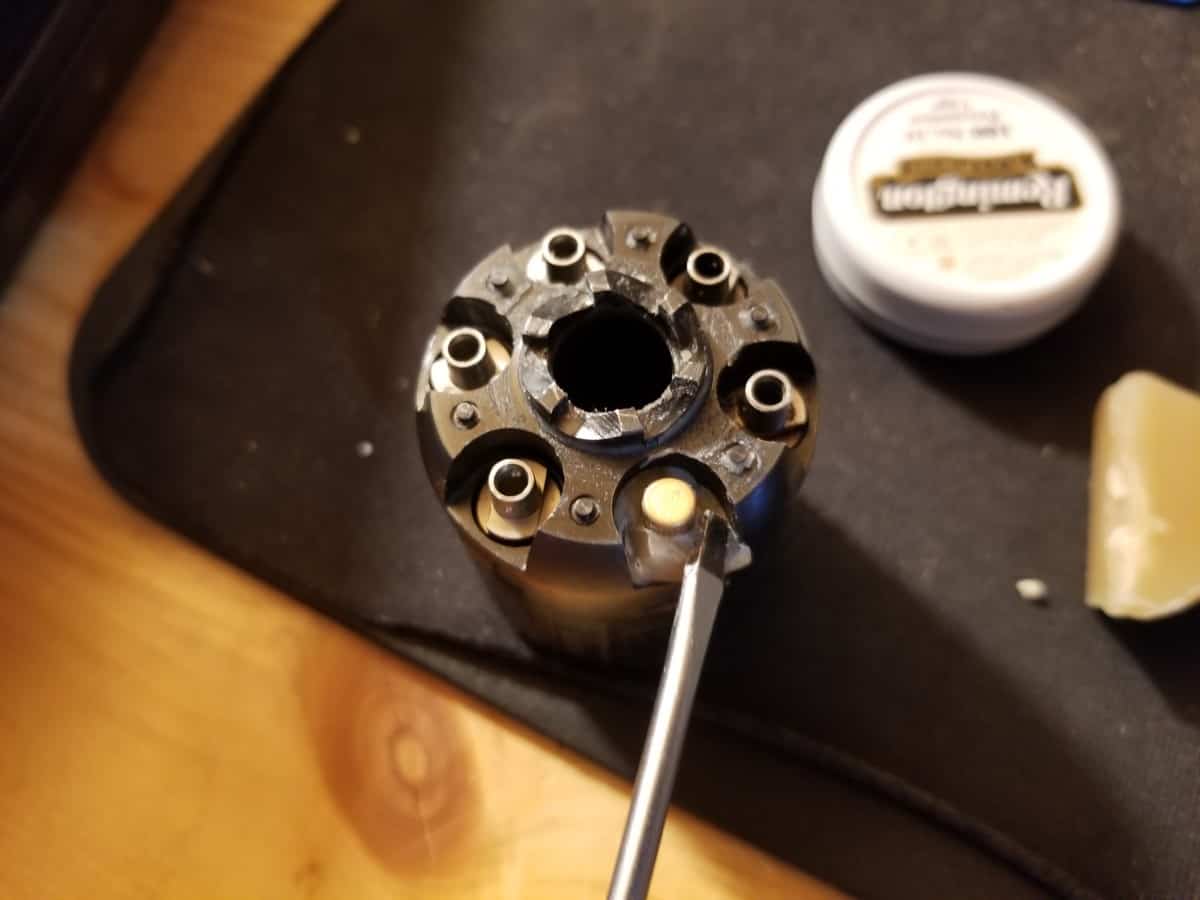
Table of Results (15 minutes Submerged in Water)
(Descriptions in Following Sections)
Waterproofing a Cap and Ball Revolver Results
| Waterproofing Method | Successful Discharges (out of 12) | Notes |
|---|---|---|
| SliXshot Nipples with Waxed Nipple Walls Prior to Capping | 11/12 | Overall Favorite. Fast application. First one was the failure and it was because I didn't rub enough bees wax on the nipples prior to putting a cap on. Caps fall off by themselves after each shot with no cap jams. Easy cleanup. |
| SliXshot Nipples with Waxed Nipple Walls Prior to Capping and Wax Pressed around the Cap | 12/12 | Very time consuming. Must be very careful when using the small screwdriver around the cap to press the bees wax around it. Caps and wax chunks would bind up the rotation of the cylinder regularly. Cylinder must be removed after firing to pry off caps and to dig out all of the wax. Hard to clean. |
| SliXshot Nipples with Wax Pressed Around the Caps | 9/12 | Without the nipple walls waxed to create a seal between the cap and the nipple, it was a game of chance whether or not I put enough bees wax around the base of the cap where it meets the nipple. Bees wax will crack, and you cannot see your work between the nipple and the cutout for the nipple towards the center of the cylinder. Binds of the cylinder upon rotation. Not worth the effort for the results. |
| Factory Nipples with Waxed Nipple Walls | 3/12 | I was on a quest to find the best solution, so after the factory nipples failed this badly after the first test that I put the SliXshot nipples through I didn't continue further. |
What is the Best Waterproofing Method for Cap and Ball Revolvers?
Without getting into the testing methods and how they were conducted (details on those in the sections below), I can say that I got near equal results with the two methods with the highest reliability.
Both methods involved using SliXshot nipples and Remington #10 caps.
The first result was by liberally rubbing bees wax (Amazon link if you need to pick some up) all around the outer walls of the nipples before putting the caps on and then warming up thin strips of bees wax by rolling them in my hands and molding them around the nipple and cap with a small flat head screwdriver. (See pics above)
The second method, and very surprising to me, was simply rubbing a stick of bees wax liberally around the outside of the nipples prior to putting the caps on.
My favorite is the second method. My only failure to fire was the first one and it was a solo test. I simply didn’t rub much bees wax on the nipple wall prior to capping it. The following 11 shots I liberally applied the bees wax and made sure to pick out the vent hole if any wax pressed through the blowback holes that are in opposite sides of the SliXshot nipple walls. I did not pick out the wax that plugged up the blowback holes!
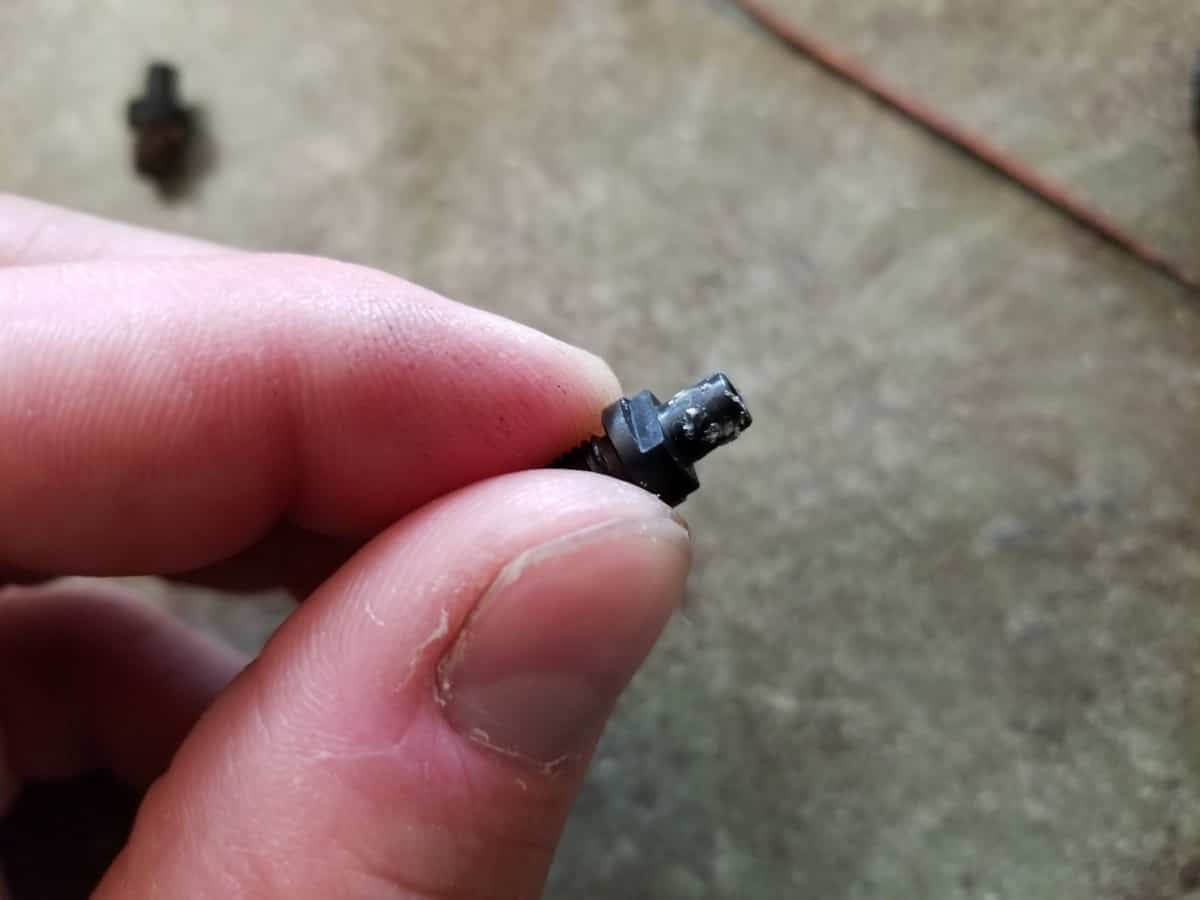
On the failure shot, I also just pressed the cap straight down on the nipple. With the following 11 I actually tried twisting the cap on the nipple slightly when pushing it down with my fingers and thumb. I’m not sure if that was a factor, I’m just noting it.
Issues of Note with Waterproofing a Black Powder Revolver
First of all, make sure that when you load your chambers that a lead ring is cut out of each of your lead balls when you press it down. This will ensure as “waterproof” of a seal as you’re going to get prior to applying grease or lube on top. It will also keep you safe from chain fire.
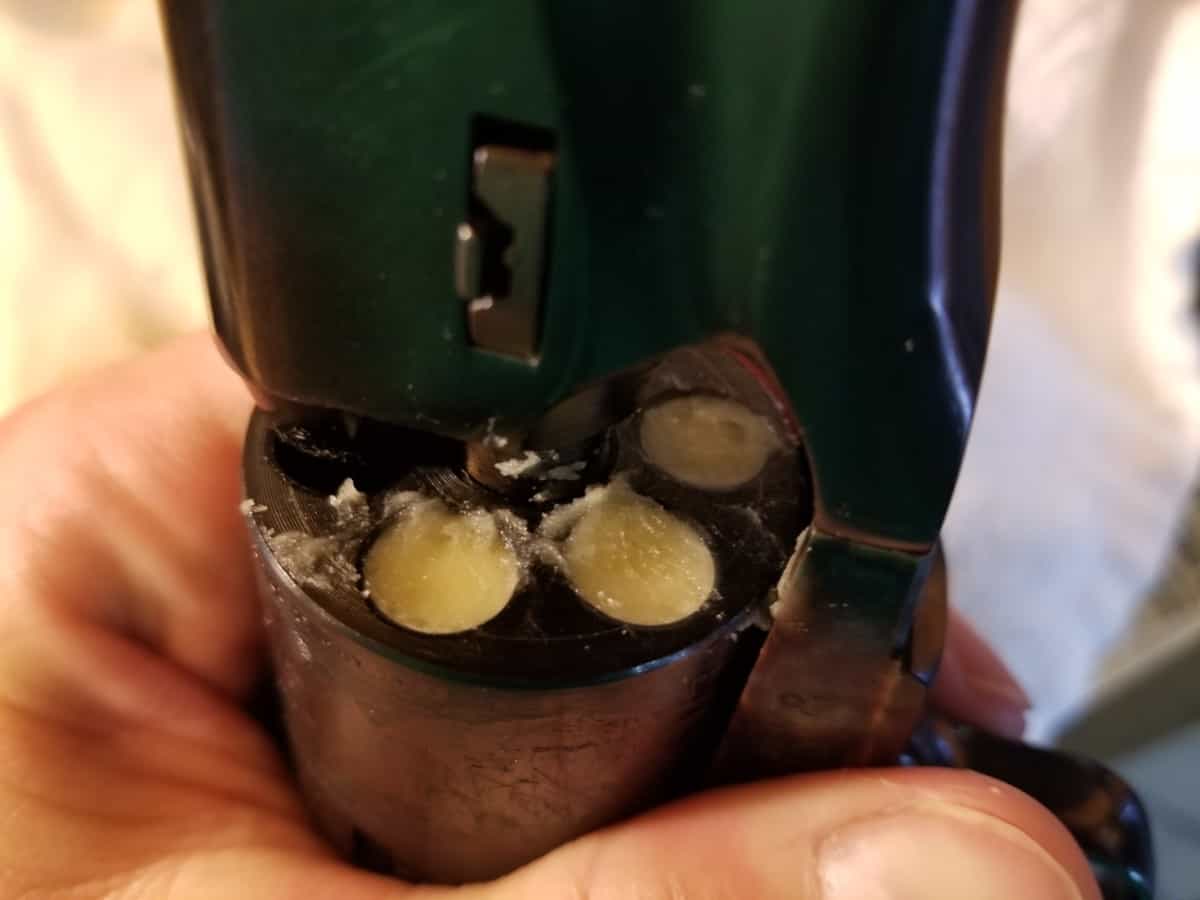
I used lube over each of the round balls more for lubrication of the round ball in the barrel than to waterproof it. I don’t like to shoot the ball “dry” down the barrel.
On the nipple side, the best way for weatherproofing your chambers is to use a tight fitting cap on a nipple and to liberally rub bees wax on the nipple walls prior to capping.
If you’re thinking of using grease around your nipple after capping it, just be warned that it’s messy and you’ll never get it to properly seal around the back side of the nipple where you can’t see and can barely fit a small flat head screwdriver in. After firing, it’s a total mess to clean up and you’ll be removing the cylinder for cleanup after your 6 rounds are fired.
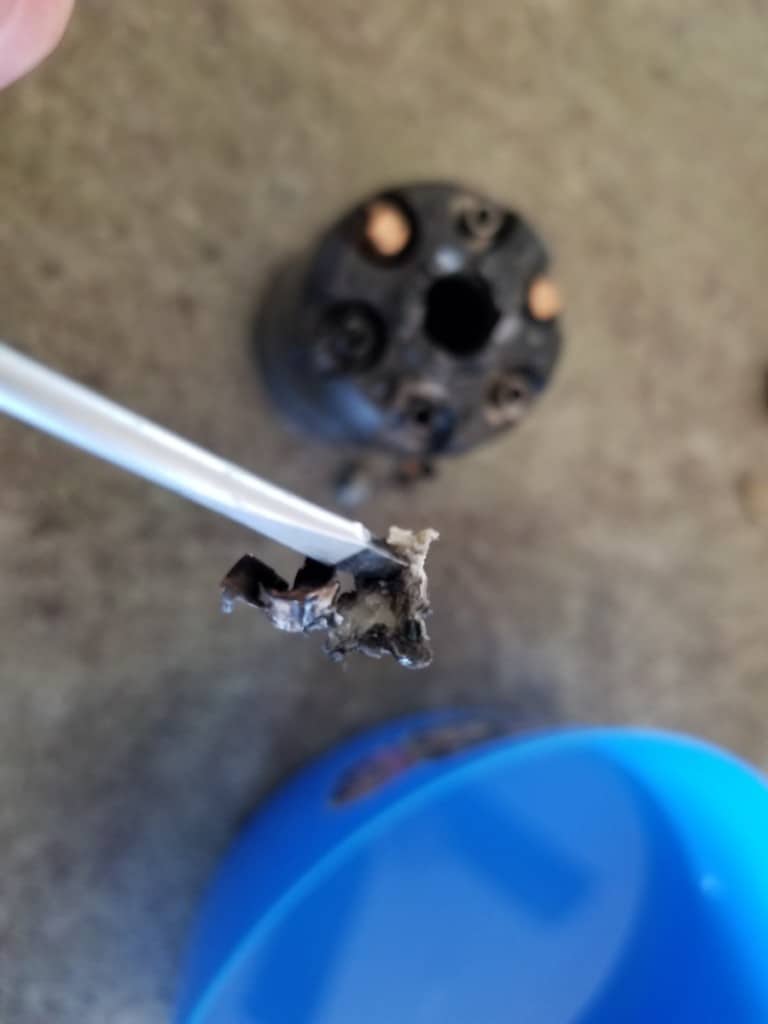
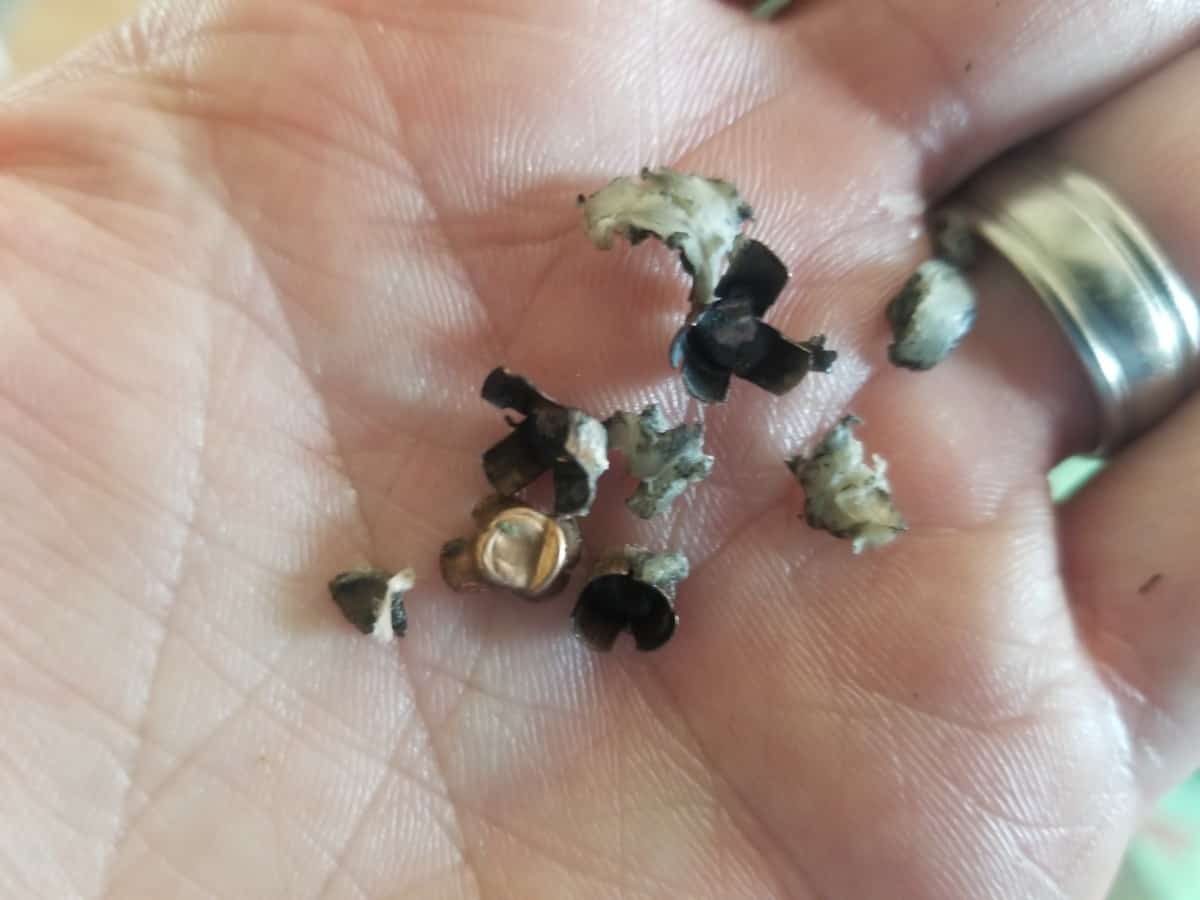
If you’re thinking of rolling up strips of bees wax to pack around the base of the cap and nipple, you’re also going to have a difficult time getting it to press into place. Your body temperature will barely make it pliable, and the minute it leaves your hands and you start to press a screw driver on it, it will begin to harden and become brittle.
You’ll constantly see cracks forming in your seal, and you’ll have no way of knowing if you have enough packed in in the backside of the nipple where you can’t see. Therefore, you’ll find yourself packing tons of bees wax to be certain that no water can get in. That’s all good and well, except when you start shooting.
All of that wax and the spent cap will protrude out and will bind up between your cylinder and the frame.
Even though I got 100% reliability by waxing the nipple walls and packing bees wax around the cap, it’s not worth it to me with all of the cleanup, lack of reliability with the next shot, and mandatory disassembly to reload.
I’m certain that if I had not been so skimpy with the bees wax on the nipple walls prior to firing the first cap (failure) that I would have had 100% reliability in firing as well.
Better yet, if you wax the nipple walls prior to capping, the caps fall off as designed after you rotate the cylinder, and there is no messy cleanup.
Frankly, if it still fires after being submerged in water for 15 minutes, I think getting rained on won’t be an issue.
Keep in mind that if you put anything on the nipple side, I recommend only using straight bees wax — especially if you are in hot weather. If you use lube (a wax and oil/tallow blend), the lube will become runny in hot weather or in direct sunlight since the finish on the gun is dark, and that oil can leach into your primer and ruin it.
For more on this issue, I did experiments to test the best lubes for cap and ball revolvers and I have my results here that show what is runny and what is best for particular temperatures.
Finally, if you do pack bees wax around the cap and nipple, make sure that none is on top of the cap as it will cushion the hammer blow and will likely result in a misfire.
